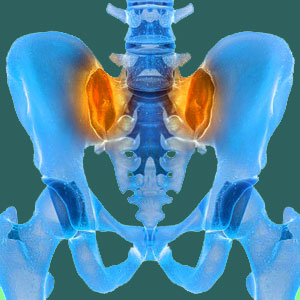
Sacroiliac scapegoat conditions are incidental to pain, but incorrectly take the blame for creating symptoms. In essence, we are discussing gross misdiagnosis of catastrophic variety. Scapegoats exist throughout the healthcare sector, but are most often associated with back pain and joint pain syndromes, including the sacroiliac joint.
Scapegoats are one of the major reasons for treatment failure, which is logical. After all, if a condition is implicated as the source of pain, but is actually innocent, then how can any treatment targeting that condition be effective? Even if the structural abnormality associated with the condition is rectified surgically, symptoms will endure, since the causative process remains undiscovered, untreated and malignant in its activity.
This essay is a must read for all chronic pain sufferers, but is particularly well suited for sacroiliac joint pain patients who have the benefit of a diagnosis, but have not found relief using seemingly indicated care.
Sacroiliac Scapegoats Explained
Scapegoat conditions are prolific in the human anatomy. Any anatomical irregularity can take the blame for causing pain, despite there being no evidence of pathology demonstrated. Just because an anatomical part is degenerated, aged, atypical or showing the signs of a past injury does not mean that it is inherently painful. In fact, medical education teaches doctors a valuable lesson that clearly states unequivocally that “atypical structure does not accurately predict pain”.
Scapegoats are often viewed on medical imaging studies and are earmarked as being atypical. This means that they are found to be atypical compared to textbook perfect. However, in virtually all cases, structural abnormalities are very typical given the age and general condition of the patient. In fact, some of the “atypicalities” are actually completely universal in the adult population. This is the first fact that makes students of pain highly suspicious of structural irregularity as a source of symptoms.
Scapegoats might stand out from the remainder of the anatomy, but will not demonstrate any verified mechanism for producing pain. Theories might be suggested, but evidence will always be lacking linking any symptoms that might exist to the suspected scapegoat origin. Once again, a significant percentage of the general population will demonstrate similar or more clinically severe examples of the exact same scapegoat, yet will experience no pain. This is fact number 2 that casts serious doubt on the guilt of scapegoat conditions.
Finally, scapegoats rarely correlate to their symptomatic expressions. In essence, given a particular structural diagnosis, symptoms expected will follow a specific pattern in terms of location, severity and progression, while scapegoat conditions tend to defy these rules. Since the symptoms of many structural abnormalities do not correlate to the proposed diagnosis, fact number 3 basically makes scapegoat conditions strike out when it comes to taking blame for truly enacting pain.
Misdiagnosing SIJ Scapegoats
When a scapegoat condition is misdiagnosed, it receives all the attention in terms of subsequent treatment and possibly even eventual surgery. Patients will be kept in limbo while doctors get rich treating the completely innocent structural abnormality. Therapeutic results will be abysmal, since the true reason for pain remains untreated and has never even been sought out, being that the scapegoat has already been labeled as the cause of suffering. The real sources of suffering here are diagnostic blunders that amount to medical negligence by any objective observer. Unfortunately, few patients have the knowledge to challenge their diagnosticians, so these mistakes go mostly unnoticed and certainly unrectified.
The results of this entire fiasco? Failed treatment and chronic pain.
Scapegoats are one of the major reasons why we now have an epidemic of chronic pain issues (all of which are known scientifically to have supposed structural basis, yet correcting the atypical structure almost never cures the pain). Why do you think that modern humans are suddenly plagued by pain that is unlike any other reported in thousands of years of medical history? Have we suddenly become weak, incapable creatures that are literally falling apart? No, we are stronger now than every before. However, we are also now slaves to mistaken Cartesian medical propaganda that is designed to separate us from our money and our good health. That is the ugly truth and scapegoats are more than partially responsible.
Sacroiliac Scapegoat Identification Tips
This article is just the start of discussion on the topic of structural scapegoats. We go into great depth of subject matter on all of our additional websites, focusing on the most common scapegoats in the spine, but also highlighting others that commonly take blamed throughout the anatomy, such as the spine, rotator cuff, knee, hip joint, carpal tunnel region and entire gastrointestinal tract.
If you want to be healthy and pain-free, then you must come to understand how common scapegoat conditions surround us in the medical establishment and prevent us from ever achieving our wellness goals. However, if you seek to beat the odds and become one of the educated few who can actually refute misdiagnosis using sound scientific research, clinical experience and statistics, then you must comprehend the concept of scapegoats and how these incidental and innocent structural changes in the body accept blame for most of the modern pain problems we now face as a society of “damaged people”.
Just to make it clear, any structural change, functional change or subjective observation made about the structure or function of the sacroiliac joint can act as a scapegoat, from hypermobility to hypomobility to inflammation to arthritis. The few exceptions are the verified disease-related conditions, such as those enacted by rheumatoid arthritis and ankylosing spondylitis, which are confirmed to be pathological conditions in virtually all forms. This is of course not to say that all of the structural changes are innocent scapegoats, since in some instance pathology can be firmly established by evidence-based diagnosed evaluation.
Sacroiliac Joint Pain > Sacroiliac Diagnosis > Sacroiliac Scapegoat





